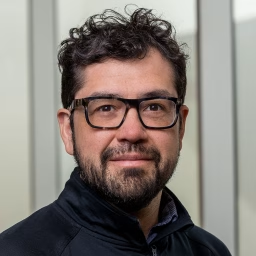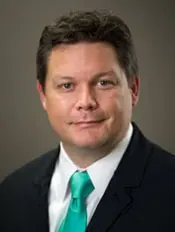In Madison, Wisconsin, May is typically a great time to experience the city’s four large lakes; while the air temperature warms up, the water is still relatively cool and clear, making it ideal for boating, fishing or lounging at the University of Wisconsin-Madison’s famed lakeside terrace.
In late May 2023, however, the city experienced an early heat wave, which triggered algae blooms reminiscent of those in midsummer, quickly transforming the lakes. Covering portions of Lake Mendota and Lake Monona, toxic blue-green algae, or cyanobacteria, closed some beaches and created a lingering, nostril-stinging stench.
 Victor Zavala
Victor Zavala
The algae growth was enhanced by the unseasonal heat, which, as climate change progresses, will become more and more common; in fact, Madison and countless other regions worldwide have experienced record-breaking heat in 2023. However, in the case of Madison’s lakes, the main driver of algae is nutrients such as phosphorous, which enter lakes and waterways in runoff, much of which is from the farm fields that apply manure to the land for crop growth.
When algae take up this phosphorous, it can lead to major algae blooms. Not only do those blooms foul waterways, they consume oxygen, killing fish and other creatures, and sometimes cause toxic strains of algae to run rampant and sicken people and animals.
In a project led by Victor Zavala, a professor of chemical and biological engineering, a team of UW-Madison researchers are developing an alternative system that cuts back on nutrient pollution. By collecting manure and using biological engineering to transform it into a more balanced biofertilizer, they aim to reduce phosphorous—and nasty algae blooms—in our waterways.
“Instead of letting the cyanobacteria grow in the lakes,” says Brian Pfleger, a professor of chemical and biological engineering at UW-Madison, “let’s grow them in a place where we can control it. Then let’s find uses for that material.”
 Brian Pfleger
Brian Pfleger
Pfleger is part of the team designing a system in which manure is first collected and processed to produce concentrated streams of nitrogen and phosphorous. The resulting inorganic nutrients are then fed to specially tuned cyanobacteria in a bioreactor. The cyanobacteria, which Pfleger has developed over the last two years, concentrate nitrogen, phosphorous and other nutrients at different ratios in their cells. Afterward, they’re harvested and processed into a well-balanced biofertilizer.
“In this project, we’re asking if we could tailor the composition of the cyanobacteria to make sure that the farmers are actually putting the correct ratio—and not an excess of phosphorous—on their fields,” says Pfleger.
The cyanobacteria are only one part of an overall system. Zavala is modeling pathways to make the whole process technically and economically feasible. That means working with farmers to understand how to efficiently collect and transport manure, determine where to site the manure processing equipment and algae bioreactor, and figure out what types of fertilizer derived from the cyanobacteria would be most useful.
“I’m trying to quantify the economics and environmental benefits of this project: what are the sensitive points to make this technology a reality and under what conditions this is going to work,” says Zavala.
Cooperating with Becky Larson, a professor in the UW-Madison Nelson Institute for Environmental Studies who works with manure systems, and Matt Ruark, a UW-Madison soil scientist, they are evaluating the algae biofertilizer value and best use practices.
Because legacy phosphorous has built up in soils and waterways over the course of decades, says Zavala, the project won’t completely stop algae blooms. But it’s a step in the right direction and could have major impacts beyond Wisconsin. Excess nutrients from farms are currently carried down waterways throughout the world, leading to ocean dead zones and massive blooms of sargassum, a type of seaweed. “This nutrient pollution is not staying local—it’s propagating to places that are not responsible for it,” says Zavala. “We tend to think the problem is local, but the reality is that it’s going down the watershed. It’s impacting places we don’t even know.”
Zavala is the Baldovin-DaPra Professor in chemical and biological engineering; Pfleger is the Karen and William Monfre Professor and Vilas Distinguished Achievement Professor in chemical and biological engineering.
Featured image caption: Algae blooms are a problem in waterways across Wisconsin, including on the campus of UW-Madison. Credit: Bryce Richter/UW-Madison.